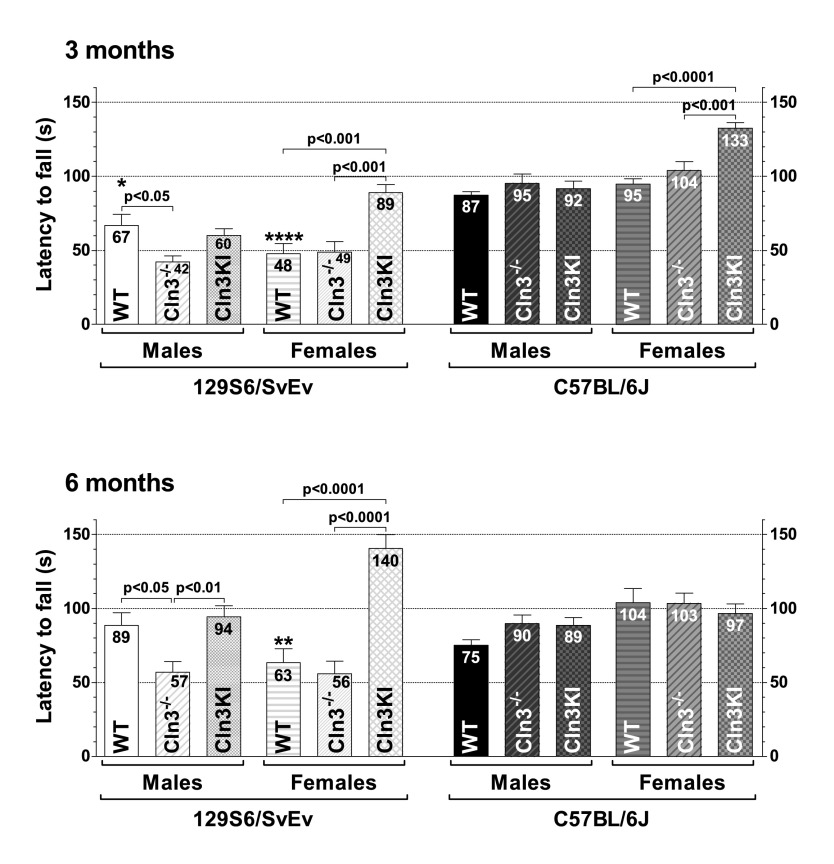Fig. 4.
Only Cln3−/− males on the 129S6/SvEv background show impaired motor coordination in the rotarod test. Three- and 6-month-old Cln3−/− and Cln3Δex7/8-knock-in (Cln3KI) mice on two different genetic backgrounds (129S6/SvEv and C57BL/6J), as well as 129S6/SvEv and C57BL/6J WT mice, were tested in an accelerating rotarod test (0.2 rpm/s starting from 0 rpm). Cln3−/−, but not Cln3Δex7/8-knock-in, males on the 129S6/SvEv background fell from the rotating rod significantly sooner than WT males. Columns and bars represent mean±s.e.m. (n=10–12). The same mice were tested at 3 and 6 months of age. Statistical significance was determined by 1-way ANOVA with Bonferroni’s post-test for multiple comparisons. Asterisks indicate significant differences between 129S6/SvEv and C57BL/6J WT mice, males versus males, and females versus females: *P<0.05, **P<0.01 and ****P<0.0001.

